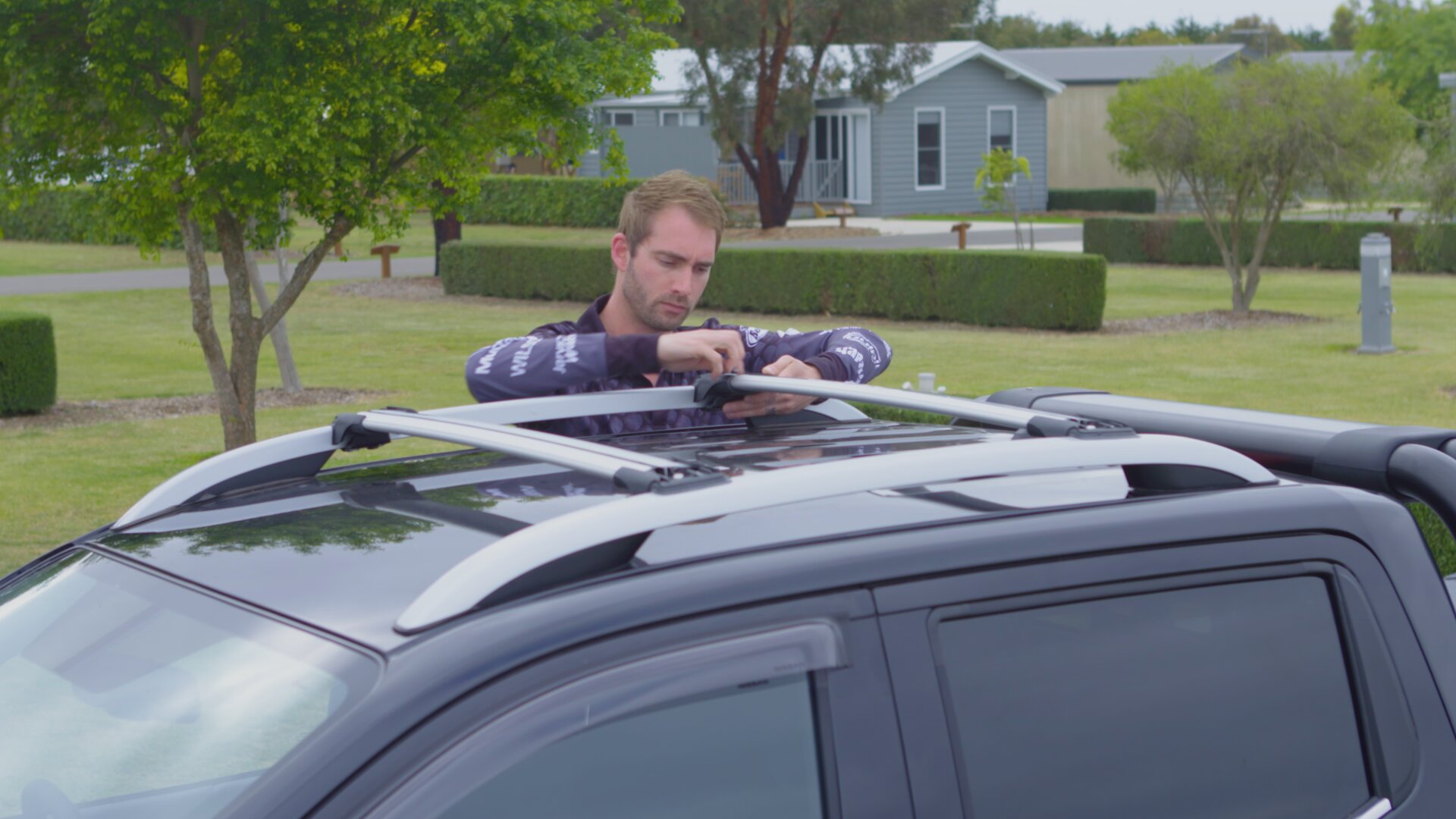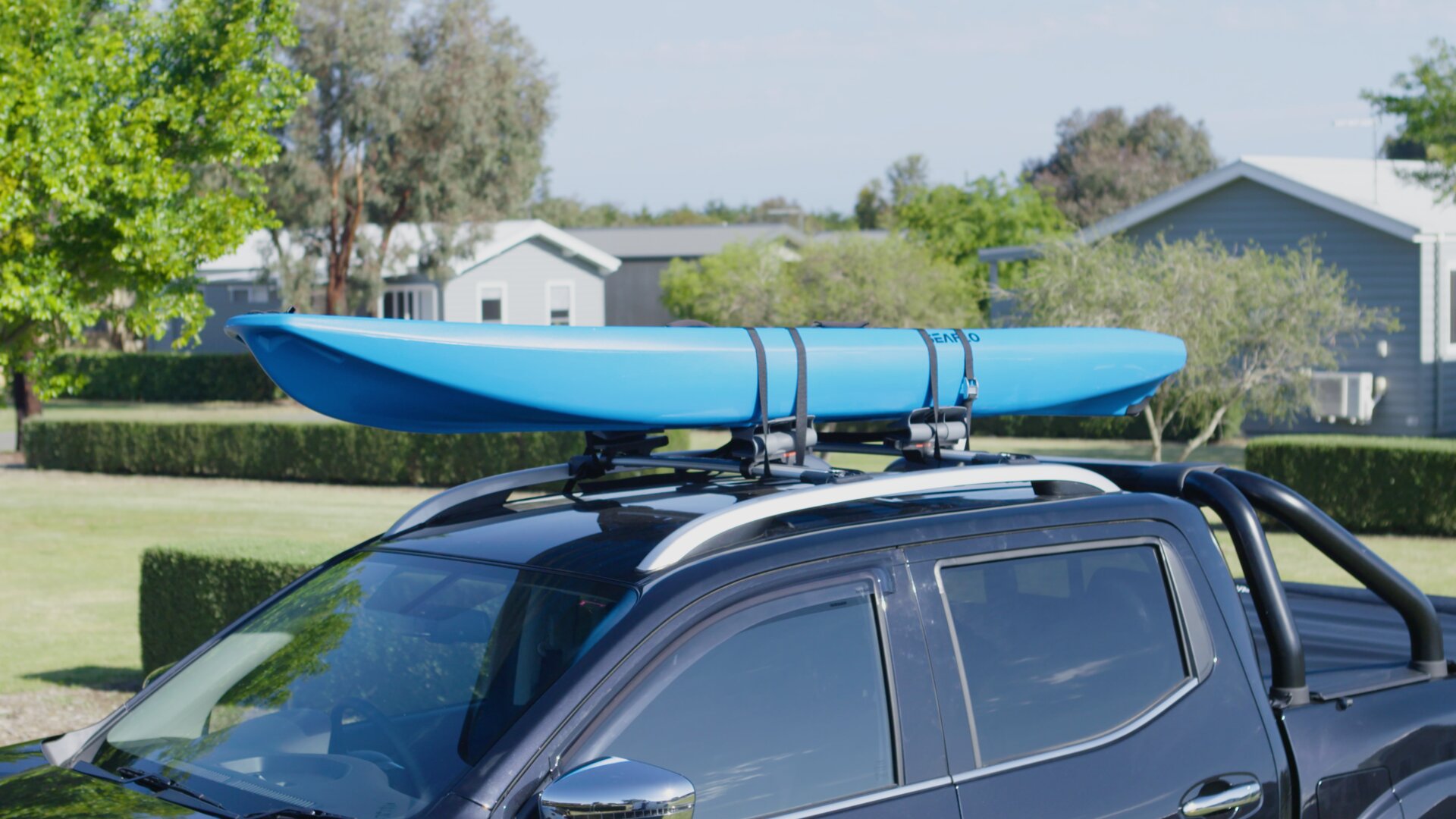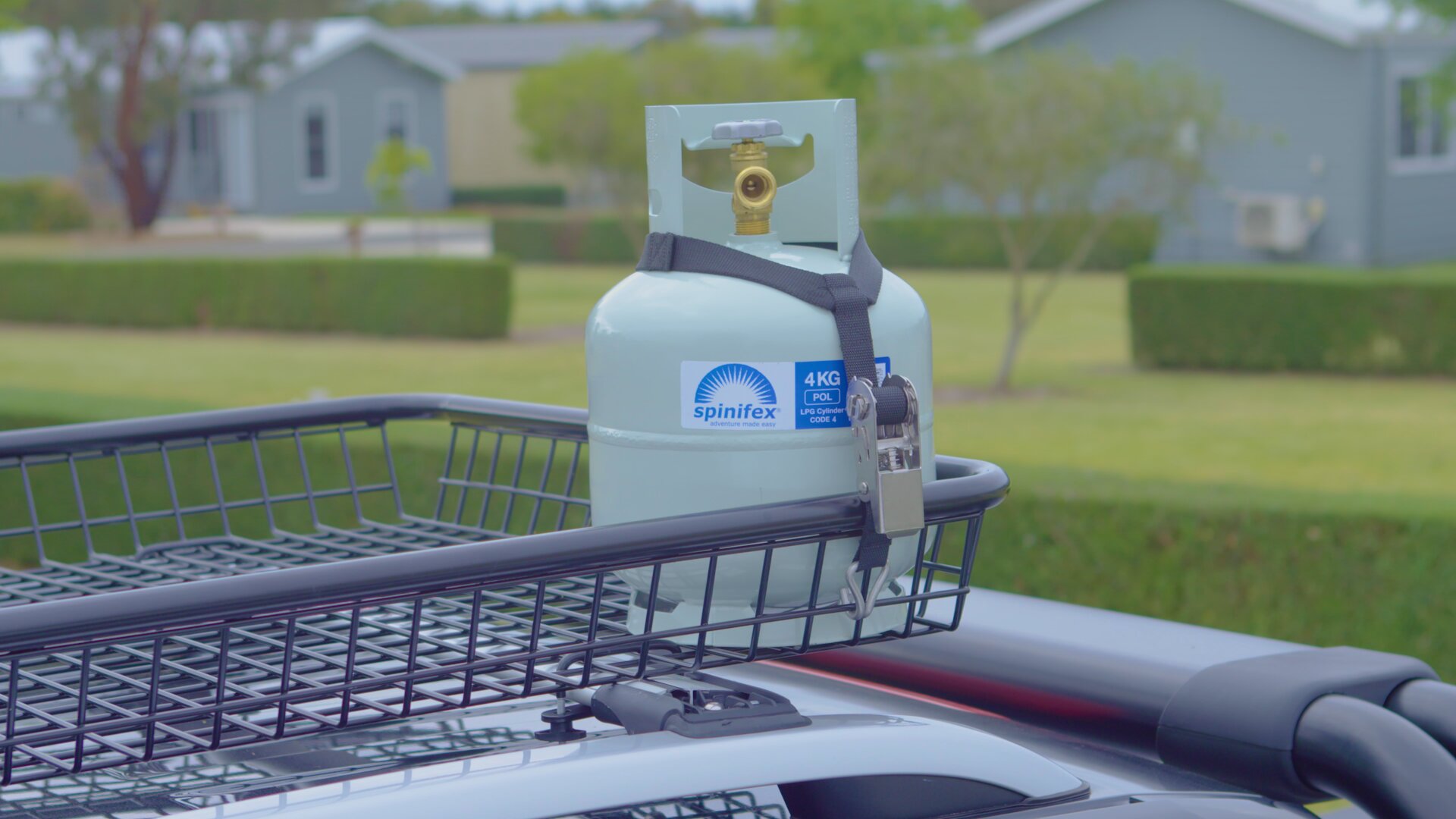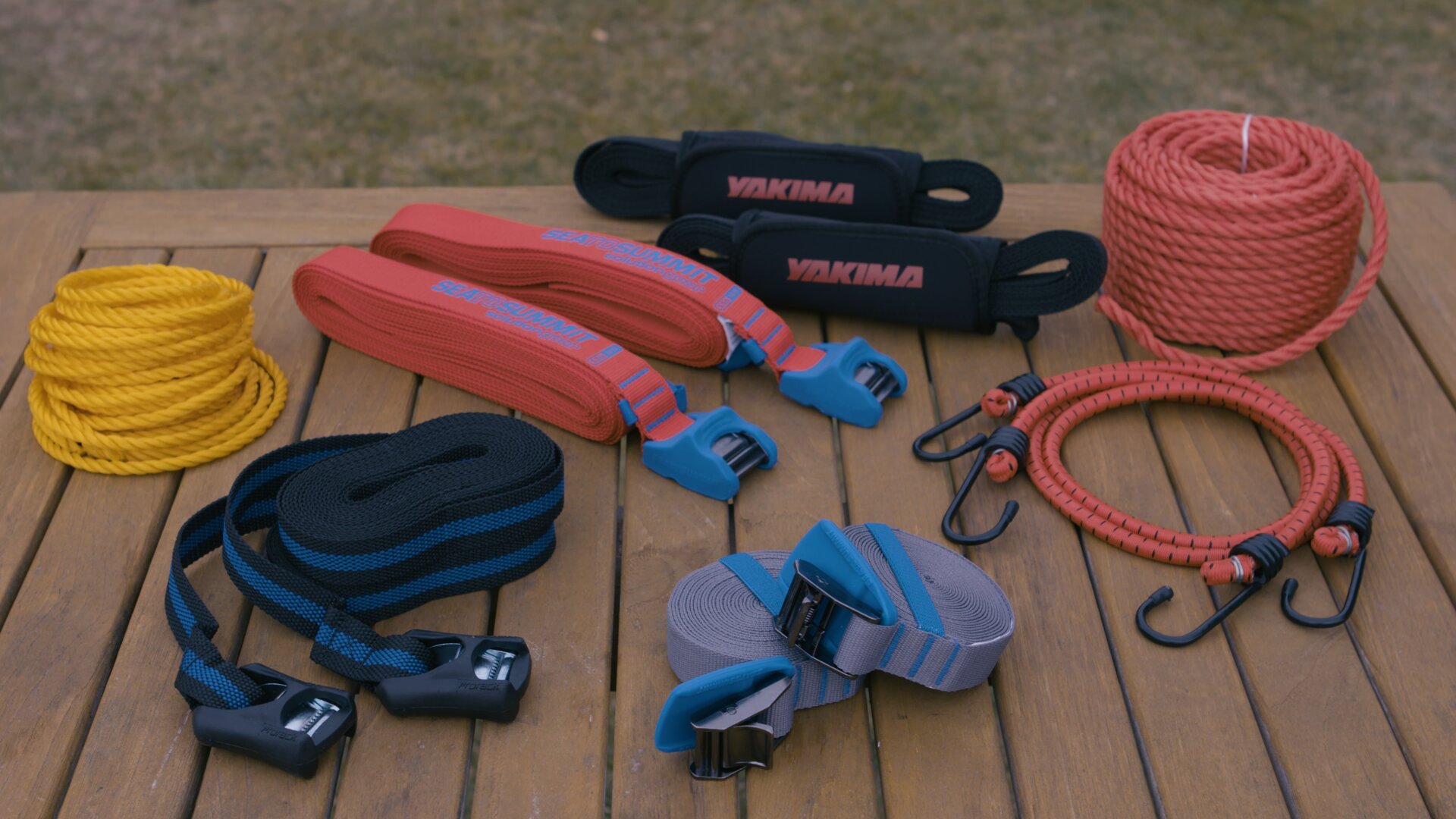| Your browser is not supported. | ||
|
Please browse our site using any of the following options:
| ||
A Guide To Choosing And Buying A 4WD Car Roof Rack
Getting your board, kayak or canoe to the water is easier with roof racks, and so is fitting everything in the car when you go camping, fishing, bike riding, skiing or snowboarding. Putting a few things up on the roof gives you more storage space in the car so everyone has enough room, and using the right restraints to secure everything keeps everyone safe. With roof racks you can also attach an awning for shade, and take more camping for longer, more comfortable camping trips.
What are the best roof racks?
The roof racks that are right for one person might not suit someone else, because it depends on:
- What you'll use the roof racks for now and in future (boards, camping, kayaks, fishing, skiing?)
- What kind of car you have (some racks are compatible with all cars - some only suit some cars)
- Your car size and the maximum weight the roof and car can handle (check your car manual)
- How many boards, bikes, rods, kayaks or canoes do you want to put on the roof racks at once?
- How fast you want to be able to attach and remove the roof racks (will you have any help?)
- Whether you want to lock the roof racks to your car (and how easy you want that to be)
- How often you'll be using it for and how often (a few days a year or for weeks at a time?)
- How long you want it to last (do you want roof racks you can use for years to come?)
Which roof racks should you buy?
Choosing roof racks is easier when you break it down into these five steps:
1. Types
There are two types of roof racks, designed to suit two different car roof designs:
Rail Roof Racks
These clamp on to your car rails (raised bars that run down the length of the roof) and are the easiest to install.
Gutter roof racks (or channel roof racks)
These mount onto a fitting kit (sold separately) which has to be compatible with your car gutters (the roof side grooves) and what you're using them for, and are a bit more work.
Check your car to see which roof design you have, and check the manual if you're not sure.
Some roof racks are also designed for specific sports equipment (and named accordingly):
- Bike racks - for one or more bikes, so taking bikes camping and to new locations is easy.
- Kayak racks - for one or more kayaks so everyone can kayak and have fun together.
- Canoe racks - for one or multiple canoes so everyone can go canoeing at once.
- Stand-up paddleboard racks - for discovering nature's beauty solo or with loved ones.
Weight is also extremely important when it comes to choosing the right roof racks:
- Rack weight - different roof racks are designed to handle different weights (so check the weight limit and the weight of the gear that's going on the roof).
- Roof weight - different cars are designed to handle different weights on the roof (so check the manual to confirm the maximum weight allowed on your roof, and remember this weight includes the roof racks as well as what's on them).
- Vehicle weight - every car has a maximum total weight (called the payload in the manual) that it's designed to handle (this includes people, the gear in the car and on the roof racks, spare tyres, petrol, the weight of the roof racks themselves and anything you're towing, so crunch the numbers and don't overload your car).
Sticking to these weight limits is extremely important for safety and legal reasons:
- Handling - too much weight can affect your car's
- Centre of gravity - too much heavy gear on the roof could tip the car
- Petrol - the heavier your car, the more fuel you'll burn through.
- Insurance - if the car's overweight an insurance claim could be rejected.
- Police - if your car's overweight and someone gets hurt you could be prosecuted.
The height of the roof racks is relevant too:
- Lower roof racks are easier to reach so getting gear on and off is easier (if you're short).
- Higher roof racks give you a higher centre of gravity and less stability on bumpy roads.

2. Materials
Roof Racks
The material the roof racks are made from determine how strong and long lasting they'll be:
- Steel is extremely strong (but it's heavy and can rust).
- Aluminium is light and still strong (and rust resistant, especially if it's powder coated).
- Soft neoprene, inflatable or polyester/foam racks are extremely light and easy to use (but should only be used for lighter gear).
Ropes & Straps
The material ropes and straps are made from determine their strength and durability:
- Rubber or bungee straps - can be used to secure gear inside the car but are not strong enough to be used on the roof (there's a risk they'll go flying off while you're driving).
- Nylon - thin and lightweight (but won't last as long as stronger polypropylene tie downs).
Polypropylene - a good all-rounder used to make tie down straps that are tough enough to handle high tension (so you can secure your gear really tightly), as well as heat and

3. Accessories
You may want a few extra accessories for your rack to secure and protect your gear.
Paddle Holders
Can be mounted next to your kayak roof rack so you can easily transport long paddles or oars.
Carriers
To transport bikes and water gear (kayak or paddle board) securely and safely without damage.
Fishing Rod Holders
For transporting fishing rods so you don't have to find space for them in the car.
Bike Racks
Can be attached to the top or back of your car with padlocks to secure them to your roof rack.
How do you load bikes on a bike rack?
There are two main types of bike racks:
Top of car bike racks
Bike racks that go on top of your car:
- Can only be installed on compatible roof racks (so check this before buying).
- Can transport your bike with the front wheel left on or taken off:
- Wheel-on racks secure the bike by the wheels and/or frame (so you don't have to take the wheel off and put it on again - perfect for bikes with front suspension).
- Wheel-off bike racks reduce the height of the bike handlebars and may need additional fork adapters or a "WheelHouse" to carry your front wheel.
- Some models are simple to get set up and can be installed without needing any tools.
Rear of car bike racks
Bike racks that go at the back of your car:
- Attach to the rear of your car via:
- The spare wheel.
- A hitch receiver (a mast-style bike carrier).
- Boot or hatch straps.
- Make it easier to get your bike on and off but can limit access to your car's
- Can carry multiple bikes on one bike rack.
- Some models:
- Tilt away from the car to give you access to the back of the car.
- Have cradles to keep bikes stable so they don't sway and get damaged.
- Have handy built-in bottle openers to open your cold drinks.
- Have a Same Key System (SKS) for the bike rack locks (with one universal key) to prevent theft (and if not you can buy a compatible SKS separately).
How do you secure bikes on a a car bike rack?
That depends on the type of bike rack you choose, so follow the instructions it comes with.
How do you use a lock on your bike rack?
Every bike rack is different-some have a built-in locking system - others give you the option to add an SKS lock or you can weave a bike lock through the wheels, frame, bike rack/roof rack.
Where can you buy a bike rack for your car?
You can buy bike racks and carriers online and in-store from Anaconda.

4. Storage
If you want more storage space for things like camping gear and luggage consider a:
- Cargo Carrier - lockable and weatherproof so your gear's safe, and aero dynamic for fuel savings.
- Basket - attaches to the roof rack to pack smaller, odd-shaped items with lots of tie down points.
Restraints
Anything on your roof racks must be secured properly to prevent accidents and injuries. Use restraints to secure everything to your roof rack, keep everyone safe and protect your gear:
- Gas bottle restraint - keeps your gas bottle upright by securing it with a padlock.
- Spare tyre restraints - stops your spare tyre moving or flying off in sudden breaking.
- Shovel and tool holders - keeps them still so they don't go flying and cause any injuries.
- Fuel canister holders - keeps the canister in place and stops it from launching into the air.
To safely secure the lightest and the heaviest loads while you're on the road, you can use:
- Tie downs - manually tighten the straps and secure with the cam buckle.
- Ratchet straps - the ratchet mechanism tightens straps forcefully (not for fragile loads).
- Bungee cords/elastic straps - with hooks/loops for lighter loads/gear unlikely to tip/fall.
- Chains and shackles - super strong metal for very heavy loads (security padlock optional).
- Cargo nets - to secure small/light gear to your car's inside ceiling so nothing goes flying.
- Cable locks - to protect your property from theft if it's left unattended on the roof racks.

5. Quality
When weighing up which roof racks to buy, think about quality versus cost:
- Cheap roof racks may not be as strong and reliable so could break, cause injuries and damage your gear.
- Bulky racks and attachments may be cheaper but they're not as aerodynamic so can slow you down and chew through fuel.
- The quality of your ropes and tie downs is really important because damaged or frayed ropes or tie downs can snap.
When it comes to how much you should spend on roof racks, it depends on how you'll use it:
- If you're travelling around Australia, invest in durable materials that will last.
- If your load isn't secured properly and the wind catches it your car could tip over, causing injuries and damage to your car and gear, so always use the right racks and restraints.
- Cheaper roof racks don't tend to last as long as racks that cost more, so you get what you pay for.
- If you want to use your roof racks and storage for years to come, it's worth spending a bit more on good-quality roof racks, accessories and restraints.
How much are roof racks?
Anaconda has:
- Inflatable roof racks from $50 to $700 kayak and stand-up paddleboard racks.
- Roof rack fitting kits for $70.
- Bike racks and roof rack accessories from $25 to $400.
- Roof rack restraints ranging from $30 to $86.
When you go to the Camping & Hiking section on the Anaconda website and select 4WD, you'll see tick box filters down the left hand side of the page. Using these filters makes working out which roof racks to buy simpler because you can choose to filter what you see by:
- Price - so you only see roof racks within your budget on the page.
- Deal - so you only see the roof racks that are on sale or at clearance prices.
- Category - so you can just see bike racks & storage, roof racks and/or load restraints.
- Brand - so you can see racks and restraints made by a specific brand.
Also factor in any additional accessories you may want:
- Restraints - to suit your gear and keep it secure.
- Baskets - for smaller and odd-shaped gear.
- Holders - to keep specific equipment secure.
- Carriers - for bikes, kayaks, canoes etc.
- Locks - to keep unattended gear protected.
IMPORTANT!
- Before you use or install any roof rack, read your car and roof rack manuals carefully.
- Regularly remove roof racks to clean between the rack and your car so trapped dirt doesn't damage your car roof paintwork.
- Put the lightest gear on the roof (tent, furniture, fishing rods) put the heaviest gear (water, tools) in the car (over the back axle so the weight doesn't damage the chassis).
- Drive carefully and always brake and accelerate gently (your car's carrying more weight so don't slam on the brakes or accelerate too quickly).
- Always ensure everything on the roof is tied down securely with the right restraints.
Other Camping & Hiking Essentials
Check out Anaconda's range of Camping & Hiking products available online or visit your local store.